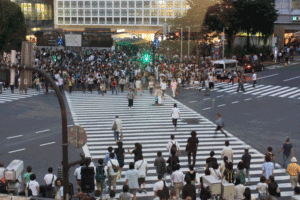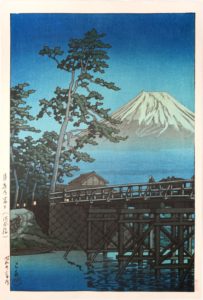Having recently spent two weeks in Japan, I am now an expert (American-style).
To exercise my expertise, I present to you:
A Gloss on 10 Things Everyone Thinks They Know about Japan.
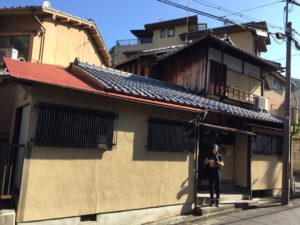
1 It’s horribly expensive.
It was, back in the 80’s or 90’s, but today one yen equals less than a penny. Just move the decimal 2 slots forward and a 1000¥ item is less than $10! There are, of course, expensive things and places. You don’t need them. Avoid Ginza (the same boring “high end” stores you find in Every City); use AirBnB (always cheaper for what you get and closer to the Real Wherever); buy a JR pass (trains are everywhere, on time, and comfy). Oh, yeah – shop for air tickets; I went round-trip for $450. Really.
2 Japanese hate foreigners.
Not that I saw. On the tourist level, everyone was super polite, cheerful and helpful. In a store that didn’t have the chocolate I was looking for, the lady walked me down the block to the store that had it. Don’t see that in Brooklyn. Japanese people smile and laugh a lot. Sure, that might be hiding a seething paranoia, but better hidden than always out front like in, say, the USA.
A Christian friend of mine who was a missionary in Japan (!), says the Japanese don’t like Christians. As a presumptive Christian, again, not my experience. Japan resisted Christian proselytizing for centuries, but there are lots of them around now. For a weird take on the Japanese/Christian thing, check out Martin Scorsese’s “Silence”. Scorsese’s Catholicism battles with his, dare I say, humanity to make the Japanese villains’ philosophical arguments more sound than those of the Jesuit protagonists.
There are 37 million people in Tokyo, but they’re not all in the same place at the same time. The city is spread out. And more importantly, public transit is superb. And most important, Japanese people have decided the most important personality trait on a crowded island is to get along. Situations that would devolve into screaming confrontation in most US metropolii are non-starters in Japan. I walked through Tokyo station at rush hour and it was like an anthill on fire. Except. People wove through the crowd without angst or drama. No “excuse me,” or “sorry” required.
4 There are monkeys who swim in the snow.
True. Up North on Hokkaido. There are monkeys scattered all over the Japanese islands; cute, dirty, nasty, thieving, horrid monkeys.

5 They make the best cars.
Yep. I love me some Ford, but for reliability and common sense, it’s Honda, Toyota, Nissan. In actual Japan, most cars, vans, and trucks are smaller than a Civic or a Camry. In Tokyo –and maybe other big cities – there are more bicycles than cars; big three speed street cruisers that all ages and genders ride.
The tiny pickups are everywhere, doing all the things pickups do. Not only do they save gas (about the same price as in the US), but they fit down the many narrow streets that more than make up in charm what they lack in width. In the country, roads are often one lane with occasional turnouts for passing or backing up. It’s just the thing to do; no pissing contest required. And the micro vans are sokawaii– which is the word for all those strange, cutesy, some would say treacley, characters the Japanese love. Hello, Kitty being a Tim Burton character compared to some you’ll see.
As a national symbol, it’s pretty great. It’s natural, it’s impressive as hell, it’s a live volcano, and it once was, and to many still is, a god. Shintoism, like most Native American religions, espouses the idea that every thing, creature, and person has a spirit: big, little good, or cranky. People climb Fuji-san for luck, for sport, as a religious exercise. Imagine if the Statue of Liberty was 1000 times bigger and always in imminent danger of blowing her head off; now that’s a national symbol we could all get behind!
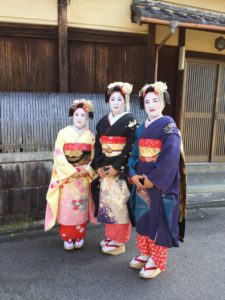
7 Geishas are like high priced hookers only they don’t have sex or maybe they do.
Didn’t see any; certainly didn’t hire one. It seems like it might be a dying profession; it’s difficult to learn – apprenticeships are still a thing in Japan. I saw a lot of Japanese tourists dressed like geisha, and it definitely wasn’t as “hot geisha.” What makes foreign travel so great is encountering traditions, words, habits that don’t translate. Geisha seem to be kinda sorta like rarified bar hostesses. If sex is involved, it would probably be by mutual agreement and non-transactional. I don’t know. Hey, why are you so obsessed with sex? Drop it.

8 They eat every disgusting fishy thing there is.
Depends on how you define “disgusting.” American fish-eating is very bland: white fish, shrimp, maybe go crazy and eat an oyster. Japan, remember is an island about the size of California, with a jagged coastline. Fishy things are more prevalent than furry things. (Someone told me the Big Macs taste fishy, but I always thought that was kinda true.) And, yes, it seems the Japanese regularly eat every sea being they can get their hands on
I admit that some of the mysterious creatures I ate had weird mouth vibes, but that’s true of anything unfamiliar. If you ate the cooked ovii of reptilian descendants you might be freaked out. Except that you do, every day for breakfast. Context, my friend, context.

9 They are crazy for all things technological.
Seems true, but aren’t we all? How often do YOU change your phone/computer/socks/haircut/spouse? Actually, the Japanese seem to have achieved a balance between the newest new and the revered old. In America, we battle over “developing” old buildings, homes, battle sites. It’s “more practical” to tear it down and put up some (usually) lesser structure. In Japan, after 100 years or so, they seem to cherish the old stuff – even rebuild it when it falls or burns down. Same for old artifacts; swords, pottery, clothing, masks, people.
Techno-mania is taken to the inth degree there; most mania are. But the have fun with it. “Chindogu” is the hobby of making useless inventions, like a butter grater, or a square watermelon. My favorite obsessive is Tatsuya Tanakawho uses tiny people in conjunction with everyday objects to make witty comments about Life Today. 
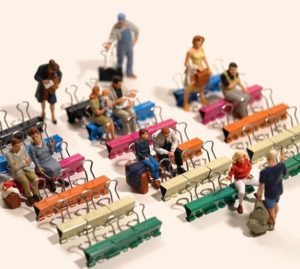
10 Though the trains run on time, they literally smash people into overcrowded train cars. 
I’ve seen those videos, though I didn’t see it in person. Rush hour trains were crowded, but not like a New York subway or Paris Metro. And people turn into themselves, reading, playing phone video. Loud talking is frowned upon; loud music non-existent. The conductors bow upon entering and leaving a car. Train platform workers and ground crews at the airport also bow as the transport arrives and leaves. Weird? Perfunctory? Sure, maybe, but I’ll take politeness and respect any way I can get it.
The Takeaway
I’ve always had a hunger to experience the actuality of Japan. Drawn to the Japanese minimalist aesthetic, the balance of fierceness and delicateness, the foreign-ness, I was also wary of the language barrier and the same foreign-ness I was drawn to. All that was swept away in the reality of Japan. People were polite, smiling, generous; cities were clean, safe, and well-run. There are still pockets of ancient Japan that are preserved and revered by the natives. Most tourists in Japan are Japanese.
I came back determined to be cleaner, more polite, more generous. Obviously, I had a shallow experience on this, my first visit: but I’ll be back. I want more. If you truly want to know the World, you have to get out and see it, face to face, no mediating barrier. Do it while there’s still time.
